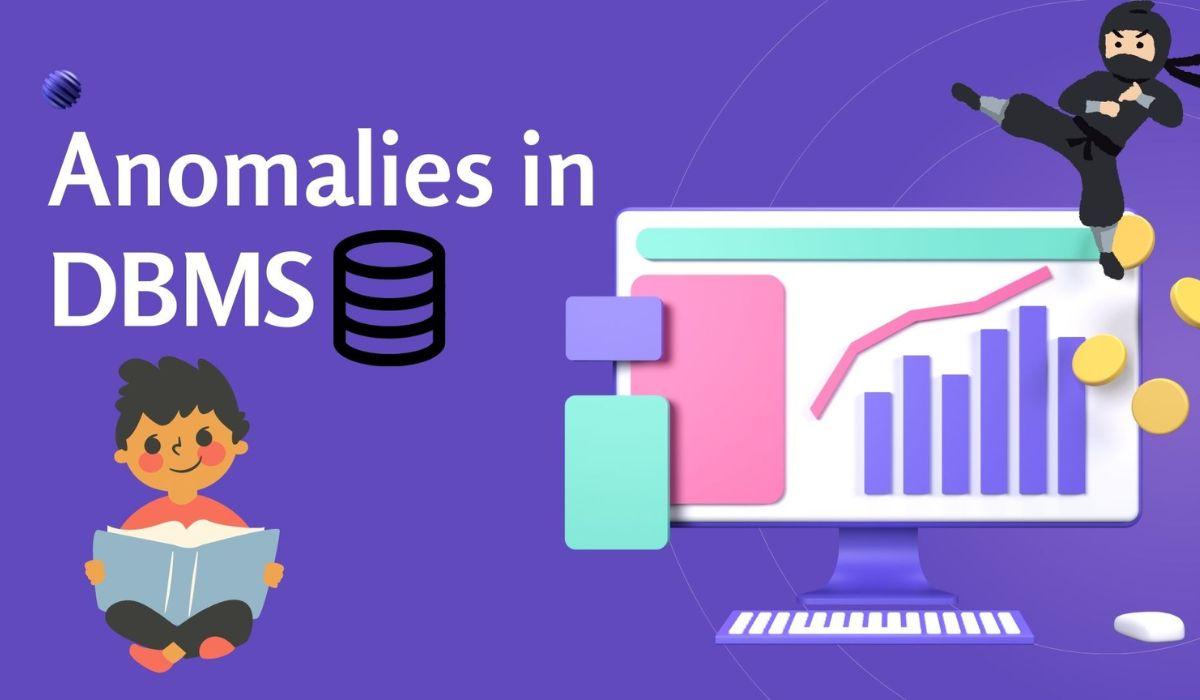Mastering Database Design: Navigating Anomalies and Normalization
 SOURAV BERA
SOURAV BERA
Situation: Imagine you're tasked with developing a database system for a new e-commerce platform. Your goal is to create a robust and organized database structure that can efficiently handle large volumes of transactional data while ensuring data integrity and consistency.
Task: Your task involves understanding anomalies that can occur during data manipulation and retrieval, grasping the concept of functional dependency, and implementing normalization techniques to streamline database design.
Action:
1. Understanding Anomalies:
Anomalies: Anomalies are unexpected issues that can arise when manipulating or retrieving data in databases. There are three main types:
Update Anomalies: Suppose we have a product inventory table where the price of a product needs to be updated. An update anomaly may occur if the price change is not propagated consistently across all relevant records, leading to discrepancies.
Delete Anomalies: In a customer order table, deleting a customer record may inadvertently result in the loss of order history associated with that customer, causing a delete anomaly.
Insert Anomalies: If we have an employee project assignment table and attempt to insert a new project without assigning it to any employee, an insert anomaly occurs, leaving incomplete data.
2. Functional Dependency:
Scenario: Consider a student grade table with attributes StudentID, CourseID, and Grade. Here, StudentID functionally determines the Grade for a specific CourseID. If two records have the same StudentID and CourseID, they should have the same Grade.
Action: We enforce this functional dependency by ensuring that if t1.StudentID = t2.StudentID, then t1.Grade = t2.Grade.
3. Database Normalization:
Database normalization is a critical process in database design aimed at structuring data efficiently to minimize redundancy and dependency issues. Let's delve into the key normalization levels:
1. First Normal Form (1NF):
Objective: The primary goal of 1NF is to ensure that each attribute contains atomic values and that there are unique column names.
Atomic Values: Attributes should contain indivisible values. For example, if we have a "Phone Numbers" column, it should not store multiple phone numbers separated by commas. Instead, each phone number should be in a separate row.
Unique Column Names: Each column in the table should have a unique name. This helps avoid ambiguity and confusion when querying the database.
2. Second Normal Form (2NF):
Objective: 2NF builds upon 1NF by addressing partial dependencies.
Partial Dependencies: A partial dependency occurs when an attribute is functionally dependent on only part of the primary key. In 2NF, we aim to eliminate such dependencies by breaking the table into multiple tables.
Example: Consider a table of customer orders with attributes {OrderID, CustomerID, CustomerName, ProductID, ProductName, Quantity}. Here, CustomerName depends only on CustomerID, which is part of the primary key. To achieve 2NF, we move CustomerName to a separate "Customers" table, where it depends solely on the primary key (CustomerID).
3. Third Normal Form (3NF):
Objective: 3NF further refines the design by eliminating transitive dependencies.
Transitive Dependencies: A transitive dependency occurs when an attribute is functionally dependent on another non-key attribute. In 3NF, we aim to remove such dependencies by breaking down the table into smaller, more atomic components.
Example: Consider a table of employee information with attributes {EmployeeID, EmployeeName, Department, DepartmentManager}. Here, DepartmentManager depends on the Department, which is not part of the primary key. To achieve 3NF, we move DepartmentManager to a separate "Departments" table, where it depends only on the primary key (Department).
Result:
By diligently navigating anomalies and implementing normalization techniques, you've successfully developed a well-structured database system. Your database design ensures data consistency, integrity, and efficiency, laying the foundation for seamless operations and reliable data management.
Conclusion:
As we wrap up our exploration of database design, it's important to highlight why it matters. Think of database design as the blueprint for organizing information in a way that makes sense to computers. By understanding anomalies and using normalization techniques, we ensure that our data is neat, tidy, and easy to work with.
Imagine trying to find a book in a messy library versus a well-organized one. Database design is like organizing that library. When done right, it makes finding and using information a breeze.
So why does mastering database design matter? Well, it's the foundation of efficient and reliable systems. Whether you're building an e-commerce platform or a social media app, a well-designed database ensures everything runs smoothly behind the scenes.
By paying attention to anomalies and following normalization guidelines, we set ourselves up for success. We're able to build systems that handle large amounts of data without breaking a sweat, and that's pretty important in today's digital world.
Subscribe to my newsletter
Read articles from SOURAV BERA directly inside your inbox. Subscribe to the newsletter, and don't miss out.
Written by

SOURAV BERA
SOURAV BERA
👋 Hey there! I'm Sourav Bera, a seasoned MERN (MongoDB, Express.js, React.js, Node.js) full-stack developer with over 3 years of hands-on experience in crafting robust and scalable web applications. 💻 I thrive on solving coding challenges and building elegant solutions to complex problems. Whether it's tackling algorithmic puzzles or optimizing performance, I'm always up for a coding adventure! 🌐 Beyond coding, I have a keen interest in Low-Level Design (LLD) and High-Level Design (HLD), where I enjoy architecting systems and crafting elegant solutions that scale. I'm passionate about database design and love crafting efficient data models that power applications seamlessly. 🚀 When I'm not immersed in code, you can find me exploring the latest trends in technology, honing my skills, or sharing insights and experiences with the developer community. Let's connect and embark on a journey of continuous learning and innovation together! https://www.linkedin.com/in/developersouravbera/